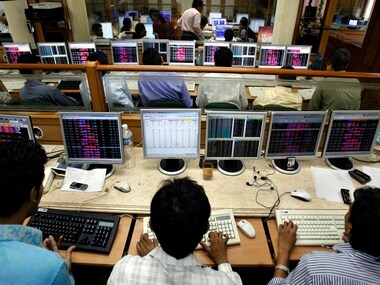The upbeat reaction of equity, currency and bond markets to exit polls for four States and one Union Territory that went for elections in November and December 2013 suggest that the markets favour a change at the centre. The Sensex and Nifty gained 1.5%, the Indian Rupee (INR) gained over 0.5% and bond yields fell 3bps on news of exit polls predicting wins for the main opposition party at the centre, the BJP across the States.
Markets must have a reason to cheer opposition victory. The UPA came into power in May 2004, retained power in May 2009 and will vie for a third consecutive term in May 2014. Is the economic scorecard of the UPA so poor that markets want a change? Markets are highly capitalistic in nature and ignore people driven issues such as basic infrastructure, corruption and law and order. In fact at one point of time the markets were the biggest cheerleaders of the UPA government, taking Sensex and Nifty to record highs and the INR to multi year highs against the USD.
Let us look at the economic scorecard of the UPA in the ten years (2004-05 to 2013-14) that they ran the economy. On the GDP growth the ten year average growth rate was 7.63% (assuming 5% growth for fiscal 2013-14) while the previous ten years showed a growth rate of 6.2%. On the growth front the UPA has done well though the sharp fall in growth from 9.6% in 2006-07 to 5% in 2013-14 is going against them suggesting that UPA growth policies were not sustainable in nature.
[caption id=“attachment_1260303” align=“alignleft” width=“380”]  Representational Image. Reuters[/caption]
On the deficits front, fiscal deficit has increased from 4.35% of GDP in 2003-04 to 4.8% of GDP in 2013-14. High GDP growth has not translated into improved public finances. However, the current account deficit (CAD) has deteriorated sharply from a surplus of 2.3% of GDP in 2003-04 to a deficit of around 3.3% of GDP in 2013-14. CAD had touched record highs of 4.8% of GDP in 2012-13. The clear lack of focus on subsidies has led to a deteriorating current account deficit. Subsidies as a percentage of GDP have gone up from 1.7% of GDP to well over 2% of GDP.
The UPA has been an absolute disaster on the inflation front. Wholesale Price Inflation has gone up from below 5% levels to double digit levels before trending down to 6.5% levels during the 10 year UPA rule. Consumer price inflation has averaged 9.5% over the last five years. The rate of inflation may show ups and downs year on year but the fact is that there is a continuous rise in prices in the economy and this hurts all aspects of the economy including growth.
High inflation has led to rising asset prices. The Sensex and Nifty have gone up by around 17% CAGR over the ten year UPA rule period while real estate prices have touched bubble like proportions rising multifold over the period. Gold prices have rise 5 times over the last ten years.
The reality check to the rise in value of equities, real estate and gold is the fall of over 30% in the value of the INR and the 350bps rise in yields on the ten year government bond. Clearly markets are unappreciative of the rise in asset prices due to inflation and that is seen in the clear thumbs down to UPA by currency and bond markets.
On an overall basis, despite GDP growth and rise in value of asset prices, the UPA government performance has been well below par on all counts. Markets want a government that could improve the overall performance of the economy.
Arjun Parthasarathy is editor Investors are Idiots.com and INRBONDS.com. Follow him on twitter #investorsidiots


)
)
)
)
)
)
)
)
)



